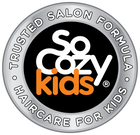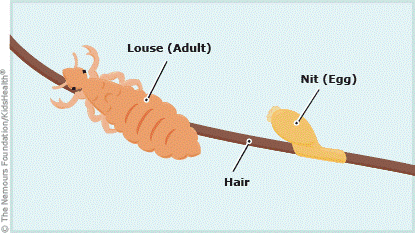SO SMART
The FAQs of Lice
Lice. Ugh. In the world of parenting, it’s one of the worst four-letter words ever. These tiny, cringe-worthy bugs can cause big drama, but only if you let them. Take a step back and arm yourself with information that will shrink this VERY common problem down to size. The most important thing you can do for your child suffering from lice (and yourself) is to remain calm. No freaking out allowed. Explain to your child that treating lice can be easily done and has nothing to do with cleanliness. In fact, lice prefer clean, healthy heads! How do kids get lice? Here are some facts about lice and how they spread. Head lice love a party, so they are most often discovered in outbreaks among groups of young children in schools, childcare centers, slumber parties, locker rooms, and camps. Kids between the ages of 5 and 12 are most susceptible to getting lice because of the way they play—sharing hats, helmets, and clothing, whispering silly secrets and bonking heads, making it more contagious. How do I know if my child has lice? The most common symptom of head lice infestation is itching, particularly around the ears, crown, and back of the neck. The itching comes from the bites of the lice, and the scratching is what causes irritation and sometimes infection. (Although sometimes it can take weeks before kids notice irritation, depending on their skin sensitivity.) If an outbreak occurs in your school or community, it doesn’t necessarily mean your child has lice, but you should do regular checks every few days until the problem has been resolved. How do I check my child for lice? A magnifying glass and a bright light may help you see nits (lice eggs) better, but keep in mind that lice will run from the light and hinder your search. Follow these simple steps to inspect: Part hair in a straight line down the back of the head to view the most scalp area. Look for nits (lice eggs), which are a teardrop shape, about the size of a grain of sugar. They have a pearly shine and always lie on only one side of the hair shaft. It’s easy to mistake dandruff or dried hair product for nits; the key difference is that nits do not come off easily. If you think you see a nit, run your finger over it. A nit will feel hard like a shell and will not move, almost as if it’s tightly glued to the hair shaft. Look for live lice, which are light brown and about the size of a sesame seed. Repeat the part behind ears vertically as well as horizontally, checking in sections. If you find something suspicious but aren’t 100% sure it’s lice or nits, take your child to the pediatrician for a diagnosis. How do I treat lice? The most effective lice treatment is the old-fashioned method of combing hair with a special lice comb and conditioner, and painstakingly removing nits and lice manually. (Now you know where the term “nit-picking” comes from!) This is the least harmful method and can be easily done at home. There are also professional lice removal businesses; they can be pricey, but usually offer a guarantee.Treating lice at home (smothering hair with olive oil, mayonnaise or Vaseline) as well as using over-the-counter and prescription drugs in the form of shampoos, cream, and lotions (such as Rid or Nix) are other options to consider, though results can vary. Depending on your child’s age and skin sensitivity, especially if you are seeking lice treatment for kids, consult your pediatrician or family doctor for advice before using lice products.Once the lice are killed, you will have to patiently and diligently remove nits with a special lice comb (extra-fine teeth and generally made of metal). You should probably treat yourself to a new pair of shoes after this. You deserve it. How long do lice live? Lice can live on a head for about thirty days, and in the environment (on pillows or clothes) for up to 48 hours. Can lice jump or fly? Similar to elephants, lice cannot jump or fly. They are highly contagious crawlers, usually transmitted by direct head-to-head contact. How contagious are lice? Lice is pretty contagious but if a family member has lice, it doesn't necessarily mean everyone will get it. If a family member has lice, wash all bedding, towels, clothing and beloved stuffed animals in a washing machine and treat them with a high-heat spin in the dryer. Soak all combs and brushes in hot water (at least 130° F) for 5-10 minutes. Vacuum carpets and play areas. Clothing and items that are not washable can be placed in a sealed plastic bag and stored for two weeks. This should help contain the lice to just one person in the family. Can I do anything to prevent lice? Yes! A handful of safety measures can go a long way in prevention: Do not wash your child’s hair every day. The buildup of natural oils on the hair shaft makes it harder for lice to attach. Teach your kids to avoid sharing hats, scarves, hair accessories, brushes or combs with friends, even when playing dress up. Regularly clean items your child’s head frequently touches, like pillows, sleeping bags, car seats, and headphones. Tea tree oil based shampoos and sprays are Nature’s best defense and completely safe to use for children of all ages. Use shampoo every other day. Spray can be used on hair or pillowcases, hoods, and hats.
Learn more



